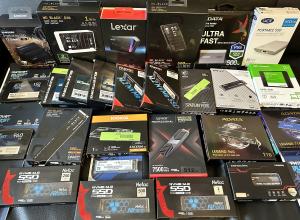AUSTRIA, August 5, 2024 /EINPresswire.com/ — Solid-state drives (SSDs) are now a standard feature of every modern PC. Compared to conventional hard disk drives (HDDs), they not only guarantee significantly faster loading and boot times for the computer, but also impress with their fast response times and now also high reliability, to name just a few advantages. In particular, switching from a conventional HDD to an SSD, but also from a SATA SSD to an M.2 SSD, can be one of the most noticeable upgrades for PC users. While SSDs with higher storage capacities were almost unaffordable a few years ago, they are now available in solid quality and with a storage capacity of 1 terabyte for less than a hundred euros. In principle, nothing stands in the way of moving your own games library or data backup to an SSD.
Nevertheless, the decision to buy a new solid-state drive can be difficult, as many differences in performance, standards and application scenarios have now become established. The website https://ssd-tester.com provides an overview, advice and assistance on which solid-state drive is the best choice for the respective area of application and what performance you can actually expect when purchasing a particular product.
Everything you need to know before buying a solid-state drive
Until now, it was usually necessary to spend hours laboriously searching for and comparing performance reviews and benchmark results on various websites in order to find the optimal product for your own application requirements, but this process can now be shortened simply and efficiently with a single click on the ssd-tester.com website. In addition to a list of the current top performers among M.2 NVMe SSDs, SATA SSDs, external SSD test and USB flash drive test, this website provides all the information you need when buying a new solid-state drive: Which standards and compatibility requirements to look out for, which solid-state drive is suitable for which usage scenario, how does which solid-state drive actually perform in the most important benchmarks, when is it advisable to use a heat sink on an SSD and when is it perhaps even counterproductive and much more.
It is also possible to “rank” the various flash drives according to different criteria, so that you can quickly and easily get an overview of which product is most suitable for your requirements. The website also provides lots of tips on how to get the best performance out of your own hard disk. The website therefore offers valuable information for both beginners and advanced users.
Independent tests and benchmarks
It is particularly important to emphasize that the speed and benchmark tests are completely independent, transparent and verifiable for everyone. The test environment used is listed in detail so that the results can be verified and reproduced. These are neither paid reviews nor targeted product placements. So if you are interested in real and independent benchmarks for SSDs, you should definitely take a look at this website.
Markus Mayer
SSD-Tester
email us here
![]()




